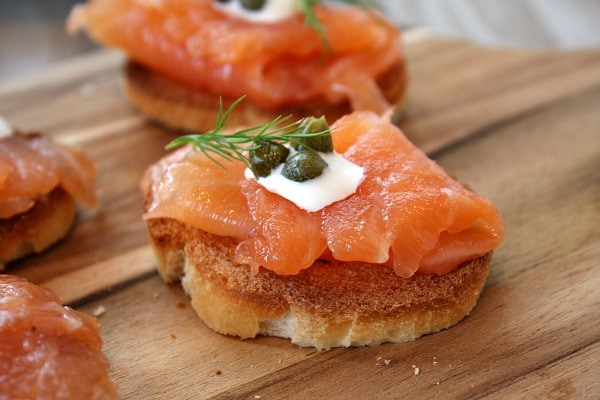
Norwegians and their salmon
For thousands of years, generations of Norwegians have been making a living as highly skilled salmon craftsmen. Their passion for the sea, deep respect for nature, dedication to responsible fishing and a cultural pride in being the best is what contributes to Norway’s success as being one of the world’s largest suppliers of both wild and farmed seafood.
Norwegian Salmon is farmed in the chilly, clear, arctic waters of Norway by people who have been doing this their entire lives. Norway is the origin of premium, ocean-farmed salmon, pioneering salmon farming way back in the 70’s.
Norwegians take great care to do the right thing when it comes to farming, and there are all kinds of systems in place to make sure that things are safe and nature- friendly. The salmon are slowly grown in a fish hatchery on land for about a year before they are considered strong enough to be transferred to spacious and protected ocean pens.
Every aspect of the salmon development is watched closely. There are laws in Norway that prevent overcrowding of the farmed fish, they are fed an all-natural diet, and they have monitors in place that alert the farmers and veterinarians to when the salmon are full so that their feeding device can be shut down. Nice to know that they aren’t fattening them up with anything and everything as quickly as possible, isn’t it? And isn’t it fun to think that there are salmon veterinarians? Who knew?!
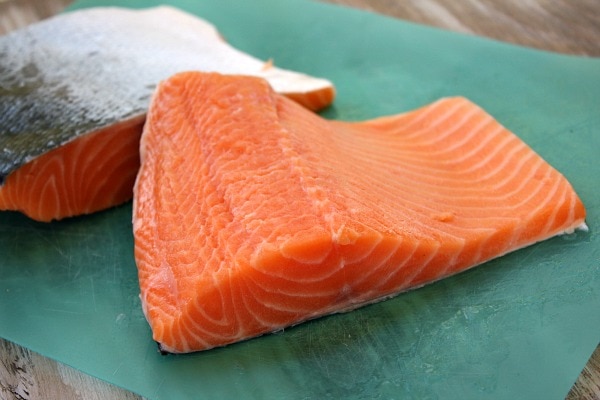
How to make Norwegian Salmon Gravlax:
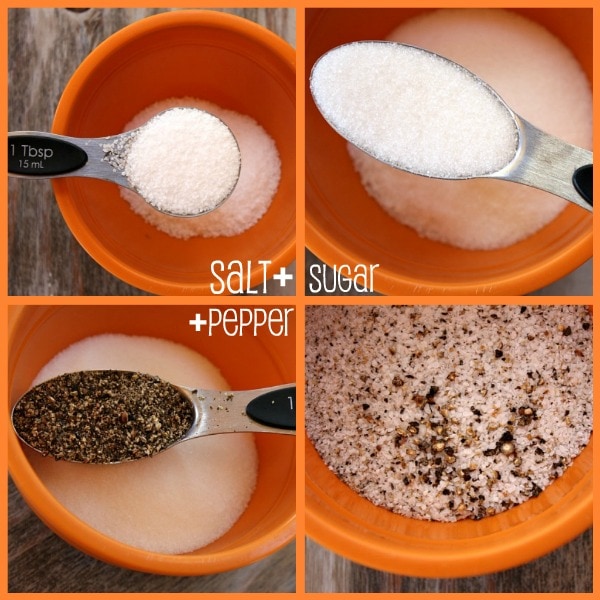
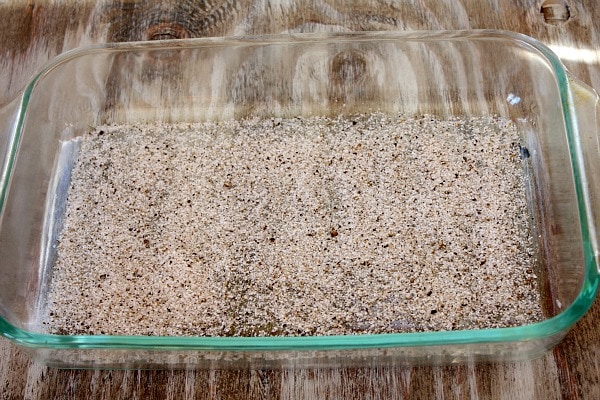
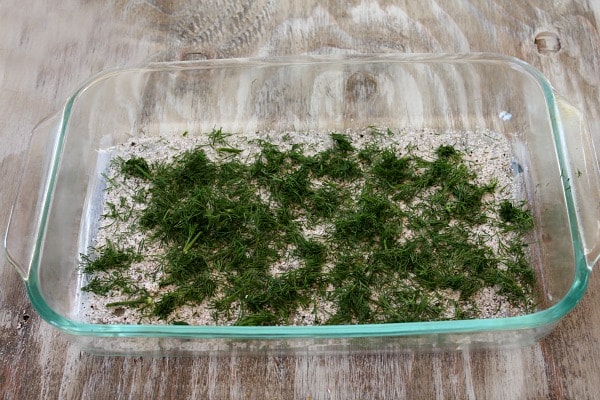
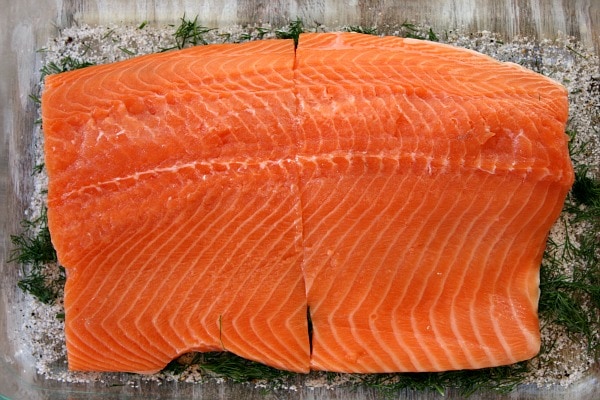
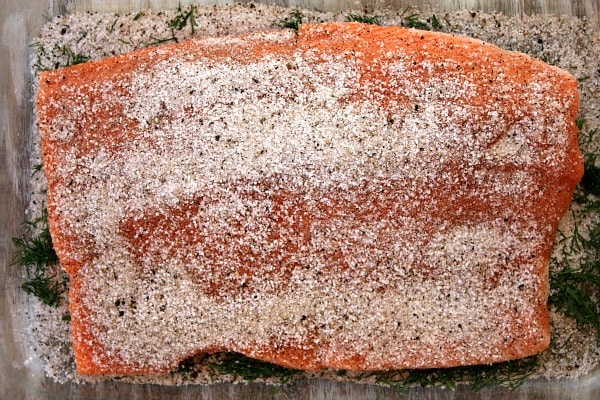
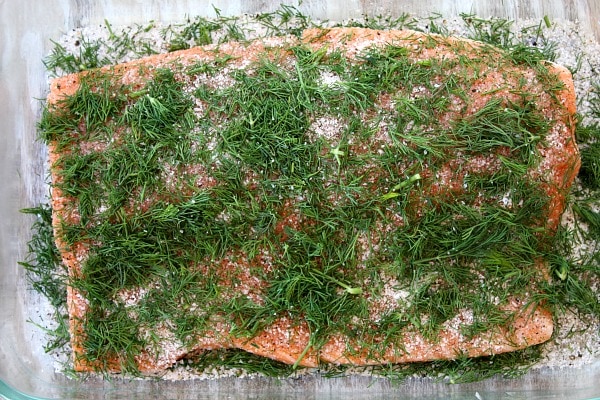
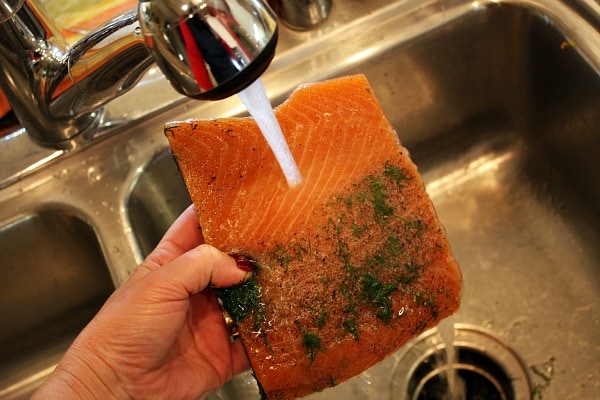
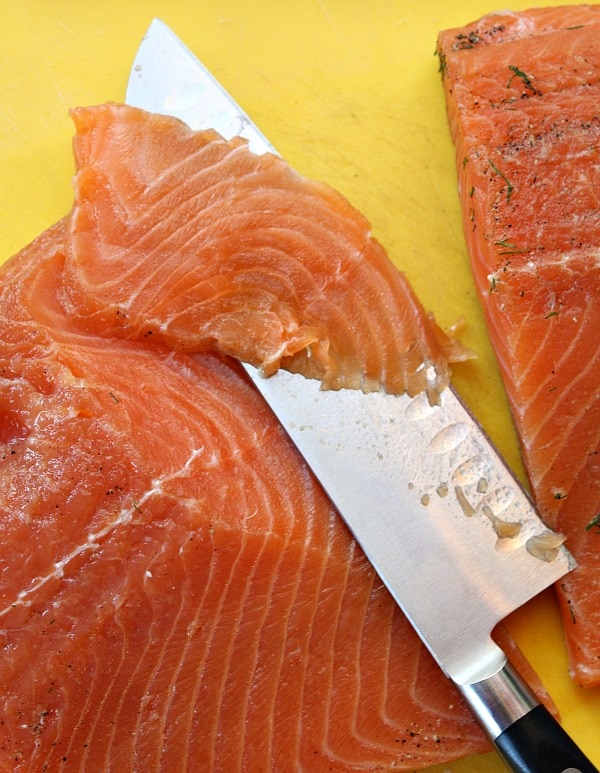
When you’re ready to serve it, slice it as thinly as you can with a very sharp knife. Sample. And then sample again. You may not be able to stop sampling!! I love salmon in every way, shape and form. I fully expected this to taste exactly like smoked salmon, and this doesn’t really taste anything like smoked salmon. It’s quite unique. The flavors of salt and dill and just wonderful, and fresh fish too. Perfect.
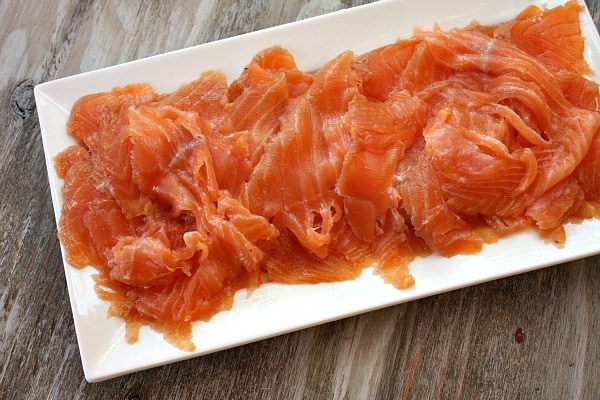
Fill up your whole platter with thinly sliced Gravlax (which you now know is “cured salmon.”)
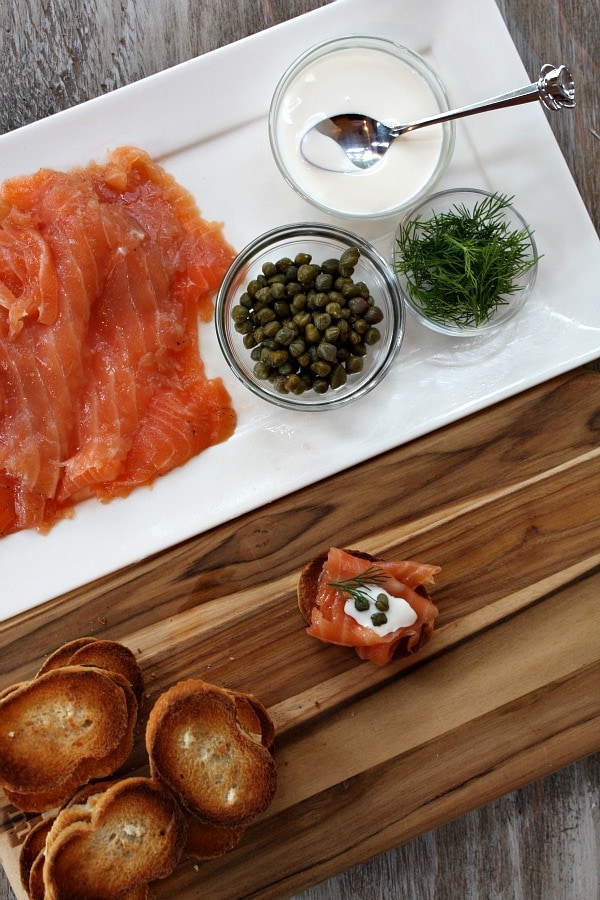
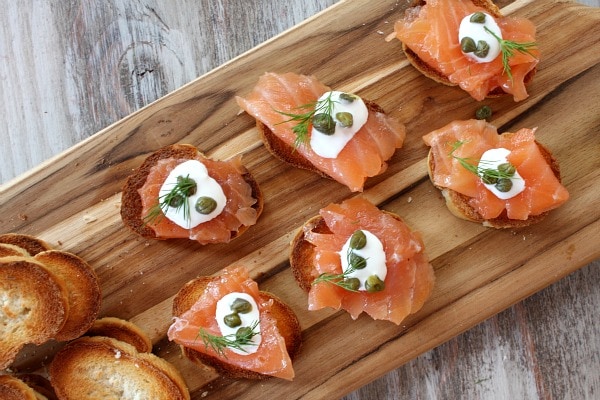
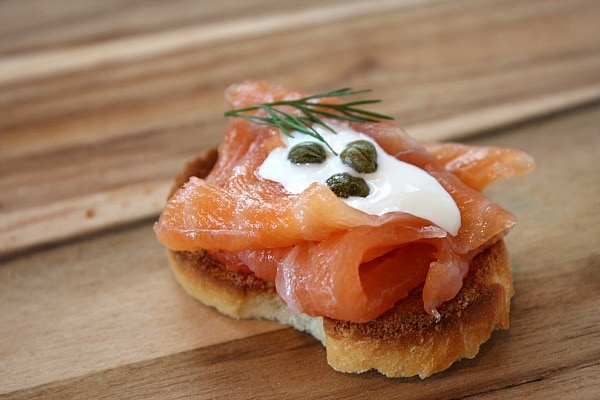
Here are a few more salmon appetizer recipes you might like to try:
- Buckwheat Blinis with Smoked Salmon
- Egg Salad Cups with Smoked Salmon
- Salmon Stuffed Cherry Tomatoes
- Smoked Salmon Dip
- Mini Smoked Salmon Pizzas
- Mascarpone and Smoked Salmon Bruschetta
- Smoked Salmon Deviled Eggs
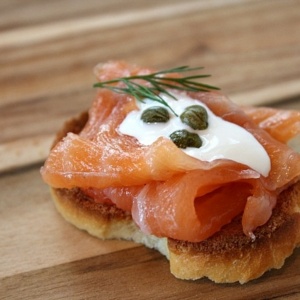
Norwegian Gravlax
Ingredients
SALMON:
- One 2-pound salmon filet (skin-on)
- 3 tablespoons salt
- 2 tablespoons granulated white sugar
- 1 tablespoon freshly ground black pepper
- 1 bunch fresh dill (chopped)
GRAVLAX SAUCE:
- 4 large pasteurized egg yolks
- ½ teaspoon salt
- ½ cup vegetable oil or mild olive oil
- 1 tablespoon granulated white sugar
- 1 tablespoon white wine vinegar
- 1 tablespoon mustard
- ½ teaspoon ground white pepper
- 2 to 3 tablespoons finely chopped dill
Instructions
PREPARE THE SALMON:
- Trim the salmon fillets. Scrape the skin well and remove all bones with needle-nose pliers.
- In a small bowl, mix the salt, sugar and pepper. Sprinkle half of the salt mixture in the bottom of a 9x12-inch glass pan, then sprinkle on half of the dill. Place the salmon fillet skin-side-down in the pan. Sprinkle the remaining salt mixture and dill on top and press it lightly into the salmon. Cover the pan with plastic wrap and place it in the refrigerator for three to four days. Turn the salmon over every day.
- On the third or fourth day, rinse the salmon under cold water. Move to a cutting board and use a sharp knife to cut very thin slices.
PREPARE THE SAUCE:
- In a medium bowl, stir the egg yolks with the salt until it reaches a thick consistency. Slowly pour in the oil while whisking quickly until the sauce is a consistency similar to mayonnaise (you may need to use a blender or an immersion blender to help this process along). Stir the sugar, vinegar, mustard and pepper into the sauce. Just before serving, add the dill.
SERVE:
- As a main dish, serve the salmon with the gravlax sauce, stewed potatoes or bread and salad. There are 8 servings if used as a main course.
- If you'd prefer to serve the gravlax as an appetizer (as shown), just toast up some thinly sliced baguette, place a piece of the cured salmon on top and garnish with a small dollop of creme fraiche, capers and dill. Alternately, you can serve it on top of cucumber slices.
Nutrition
Nutrition information is automatically calculated, so should only be used as an approximation.
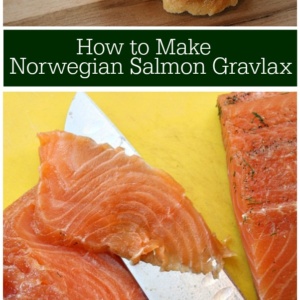

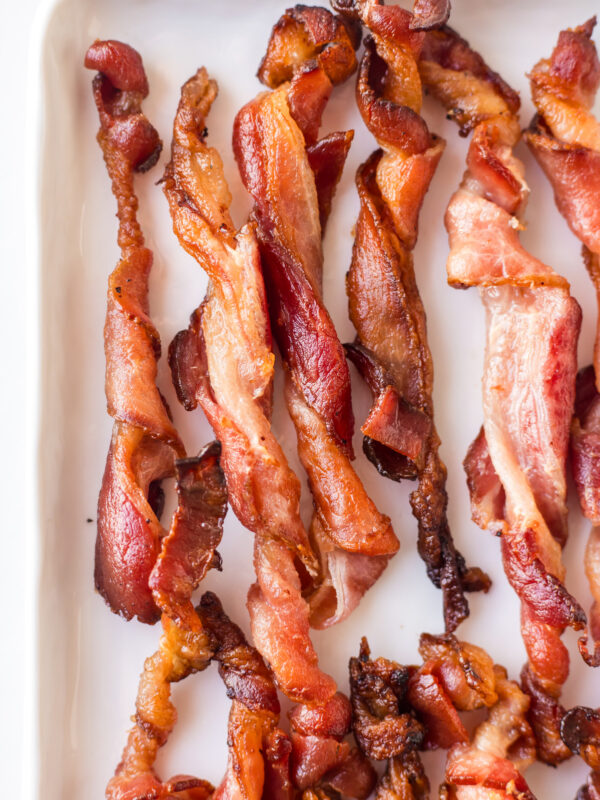
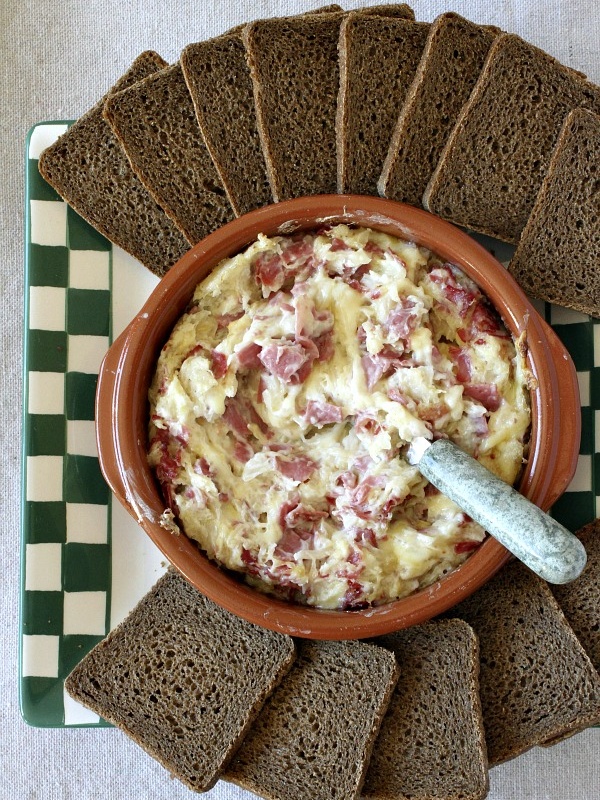










ok. Beautiful. Thanks. Do you know if making it this way is ok for an older person who has to watch the sodium? Just wondering how much of the sodium stays in the final gravlax.
I wish I knew how much of the sodium was retained, but it’s really hard to know. I would imagine that it has quite a lot. The salt is what helps transform this into gravlax.
Hi Lori,
I made this recipe and rinsed well the salmon, unfortunately it came up VERY salty. Is there any way to prevent this?
Thanks
JP
I’m not sure! I did not have that problem…
I did use weights as recommended by someone else., anyway it turned out just great. I should have used Kosher salt (large grain salt) and more dill.
thanks, I love it!
I am ready to make Gravlax-Just love it .
Question:
Do i need to put a heavy weight on the salmon while it cures in the fridge?
Someone told me I had to like when you pickle corned beef.
I didn’t use weight on mine.
We love salmon and have prepared it many ways, but wanted to try gravlax. Thanks for the recipe and the beautiful close-ups.
If to salty will soaking in water resolve the saltiness? Is ther an alternative solution? Can u suggest what may have caused the saltiness?
Well, the recipe as written isn’t intended to even rinse in water at all. I rinsed mine because I was fearful it would be too salty. It wasn’t though. Not sure why yours absorbed more of the salty flavor than usual…
YAY!! Since leaving NY, we’ve been DYING for great lox. Thank you thank you! Now I can make it in the Colorado Rockies : )
very helpfull how long does keep after the 4 day curring
1 to 2 weeks
How long will the cured fish last in a fridge?
I’ve been told 1 to 2 weeks.
Lori- such a beautiful post! I so appreciate all the work you put into it, this is a great tutorial. I’ll definitely use it!